150 million tons of clothing will end up in landfills by the year 2050 if current trends persist, according to forecasts in this study by the Ellen Macarthur Foundation and by using the purported statistic of 1.1 million tons of clothing sent to landfills which was stated at the sustainability panel of Vogue in 2016.
8 Ways to Reduce Textile Waste: Drowning in Clothes
A number of calculations were necessary to determine how many tons of clothing it would take to completely fill each of the eight famous landmarks listed below in this article. Where available, official figures for the dimensions and volume of each landmark were used; where unavailable, the volume of each structure was determined based on its building materials and their coinciding density based on accepted engineering data charts.
For clothing, both weight in kilograms and their volume — based on the density of textiles — were derived from estimations provided by an international shipping service.
In commemoration of Earth Day 2020 — which was last week on Wednesday, April 22, 2020 — I have been given express written permission for this article to use the images and the verbatim text from this article written by Danny Ashton, who is the founder and chief executive officer of NeoMam Studios. With articles such as this one, I sometimes add brief notes — but I am not knowledgeable enough about them to add much value to the information which is already here.
Using Visuals To Put Textile Waste Into Perspective
At this point, we are all aware that some parts of our day-to-day life will eventually harm the environment. Flights abroad, plastic bottles, disposable coffee cups, the electronic waste we leave behind so we can buy the latest phone – the list goes on.
But 2020 changed things.
Suddenly, we found ourselves spending most of our time at home. We are not commuting, we are not buying a coffee on our way to the office, we are not purchasing plastic packaged meal deals for lunch, we are not flying for weekends abroad.
And it turns out that these changes of behaviour could be having a minor positive impact on our environment, with some cities reporting cleaner air and clearer skies.
Due to the decrease in air pollution, we can now see the details of the sun that were hidden before. The earth is healing. We are the virus. pic.twitter.com/c6wC0EZzGZ
— Victoria Noble Kilby (@victorianoble97) April 13, 2020
Of course, we all know the lockdown is not going to revert years of damage inflicted to our planet, as “nature is healing, we are the virus” memes like the above made clear. But perhaps it can help us make some positive long-lasting changes.
But what small changes can we make that will have a big impact?
For starters, we can take a look in our closets. Whilst we bag up many unwanted clothes on our lockdown spring clean, there’s an opportunity to consider the sheer amount of textile waste that we accumulate.
Putting Textile Waste Into Perspective, The NeoMam Way
NeoMam is a small studio with team members working from across the globe — from Lithuania to Argentina. We are a varied bunch of people but a quick survey showed that we all have similar approaches to buying and discarding clothes:
- 93% of the team only buys new clothes a few times per year. What is more, two of us are actively striving not to buy any new clothes at all in 2020 – ‘I’m trying to make all my clothes this year, apart from athletics clothing and shoes,’ said one of them.
- 68% of the team reported buying new clothes to replace damaged or old outfits.
- Over 50% of the team buys their clothes online or at the mall, with only 31% of us shopping at second hand stores and charity shops.
- When it comes to disposing of old outfits, the majority of the team (almost 80%) donates clothes to charity or pass them on to family, friends and neighbours. One of our team members explained, “in Berlin there is a culture of leaving things we don‘t need anymore outside for neighbours or passers by. So I do that usually.”
- In terms of the effects of fast fashion, we all agree:
- We don’t like the ‘use-and-throw’ mindset generated by fast fashion.
- We are against the unethical production practices connected with fast fashion, including child labour, low wages and unsafe workplaces.
- We worry about the impact on the environment – from water pollution to textile waste.
According to a report by the Ellen Macarthur Foundation, without changes to how things currently are done, more than 150 million tonnes of clothing will end up in landfills or be incinerated in the year 2050.
But what exactly would 150 million tonnes of clothes look like? For starters, try about 330 billion women’s workout outfits. Or 937 billion men’s t-shirts.
To put that in perspective, we’ve visualised what some of the UK’s (and the world’s) most iconic monuments and landmarks would look like were they to be filled with clothes. Using official government data where possible, and going with accepted estimates in others, we determined the volume of each structure – and then turned them into laundry baskets.
Mountains Of Clothes Waste Building Up Every Second
The average consumer ditches 60 percent of their new clothes in the first year. If we don’t want to drown in clothes, we need to make changes to how we manufacture and purchase our clothing, and reduce the rate at which we throw away what we no longer want to wear.
If you’re curious about how fast we’re filling up landfills with our clothes, check out how long it would take us to fill up famous landmarks with discarded outfits:

St. Michael’s Tower in Glastonbury, United Kingdom = 40 seconds

Great Wall of China in Huairou District, China = 6 months
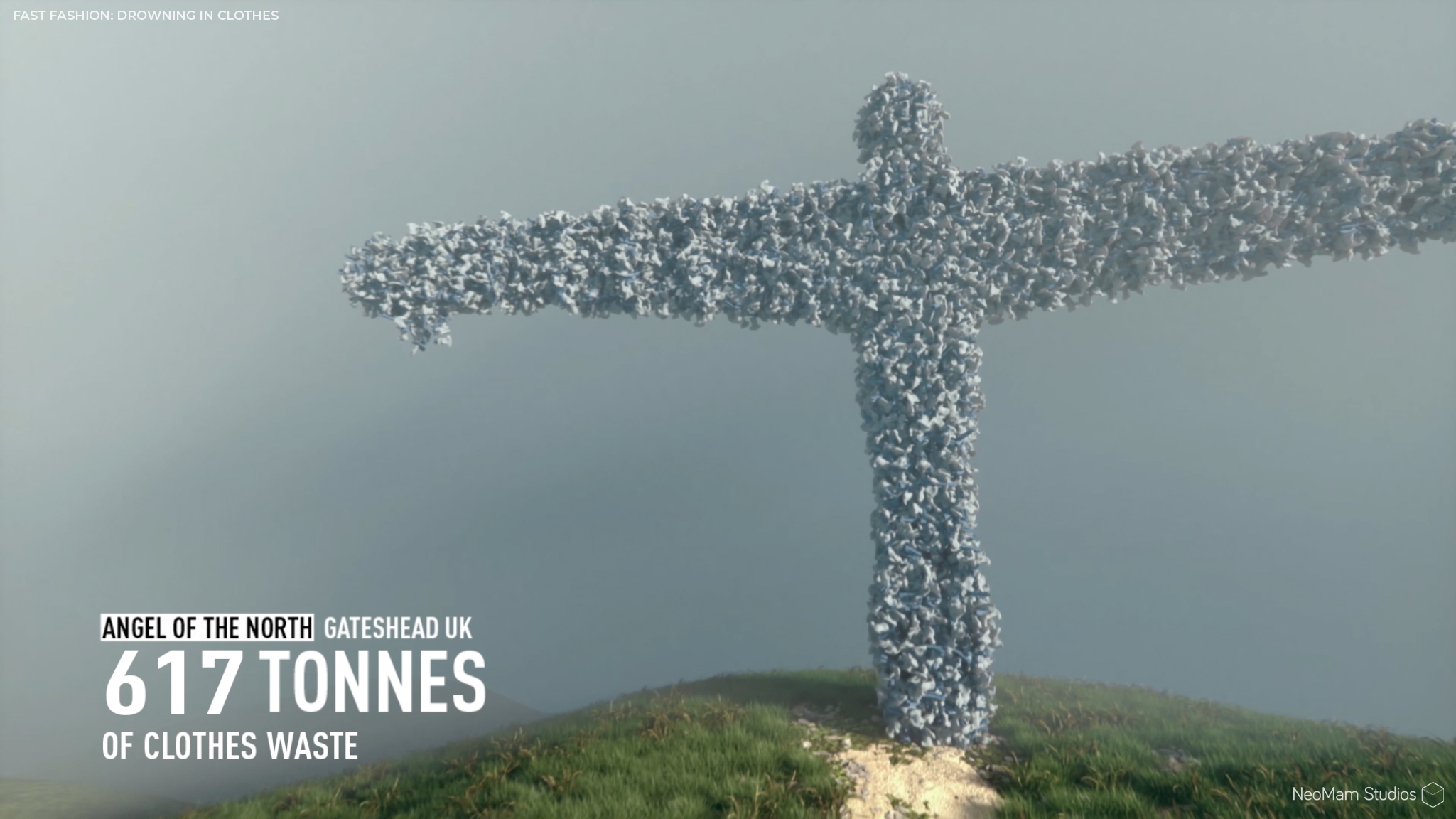
Angel of the North in Gateshead, United Kingdom = 2 minutes
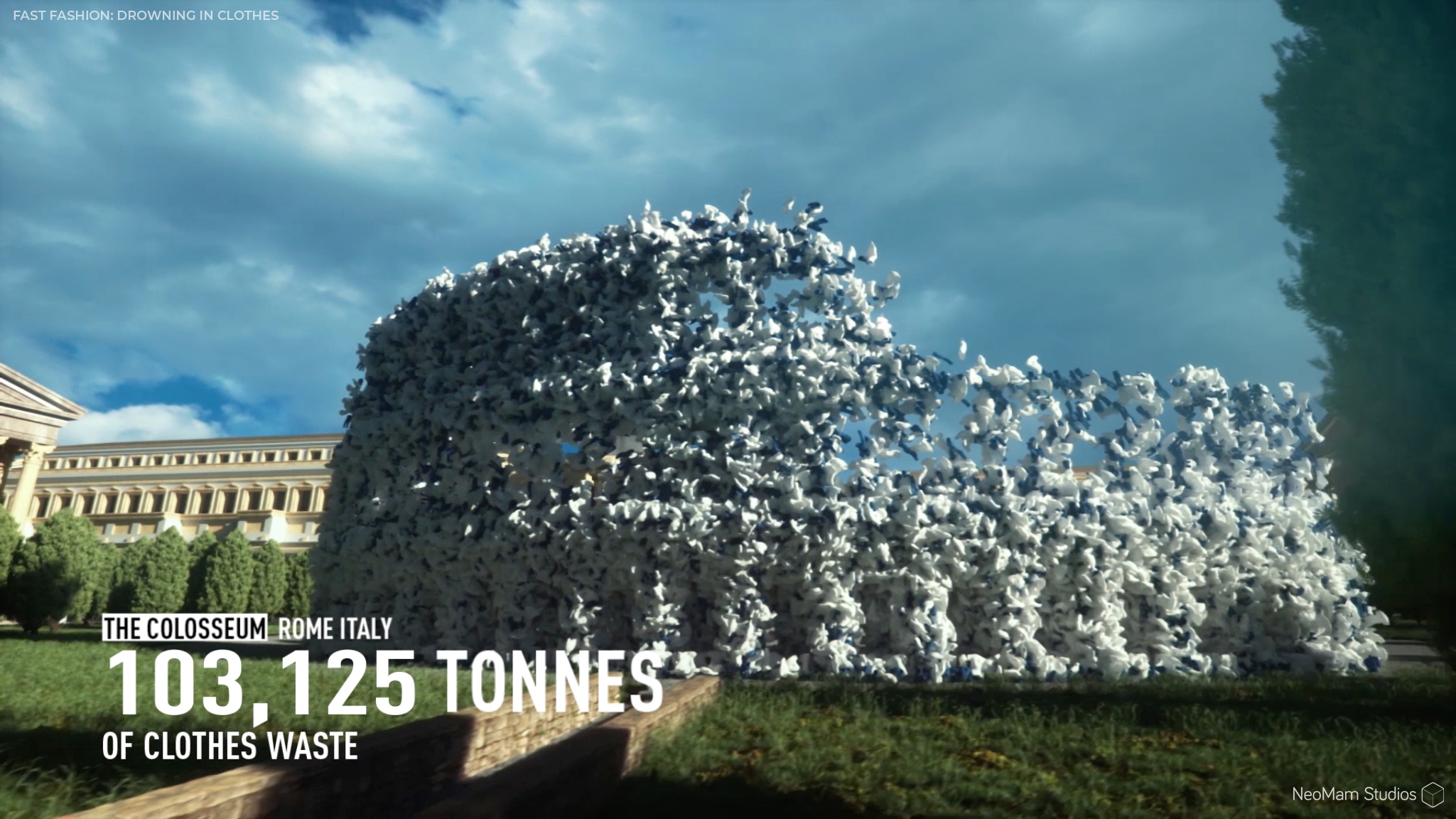
The Colosseum in Rome, Italy = 6 hours
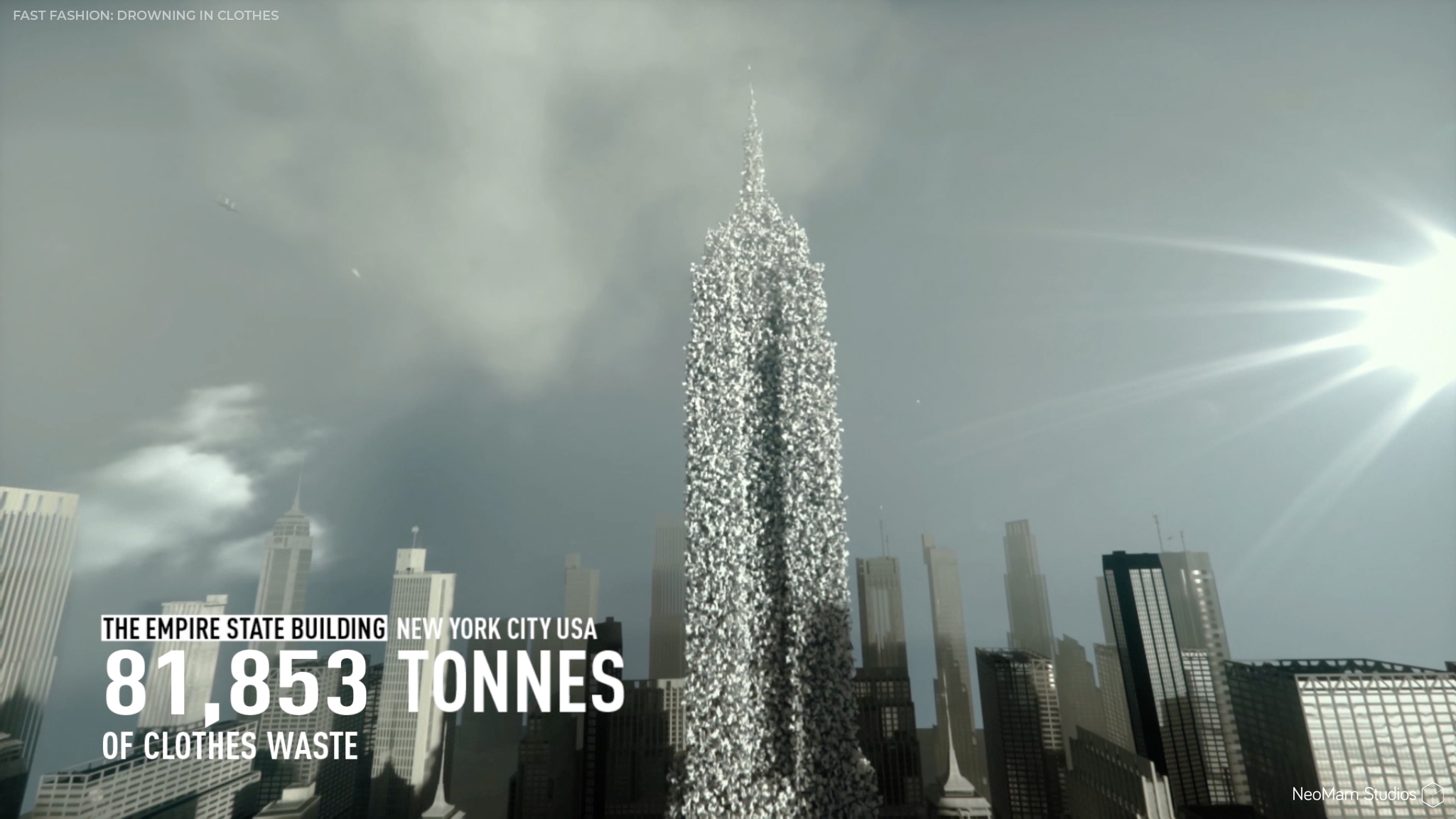
Empire State Building in New York, United States of America = 4.8 hours
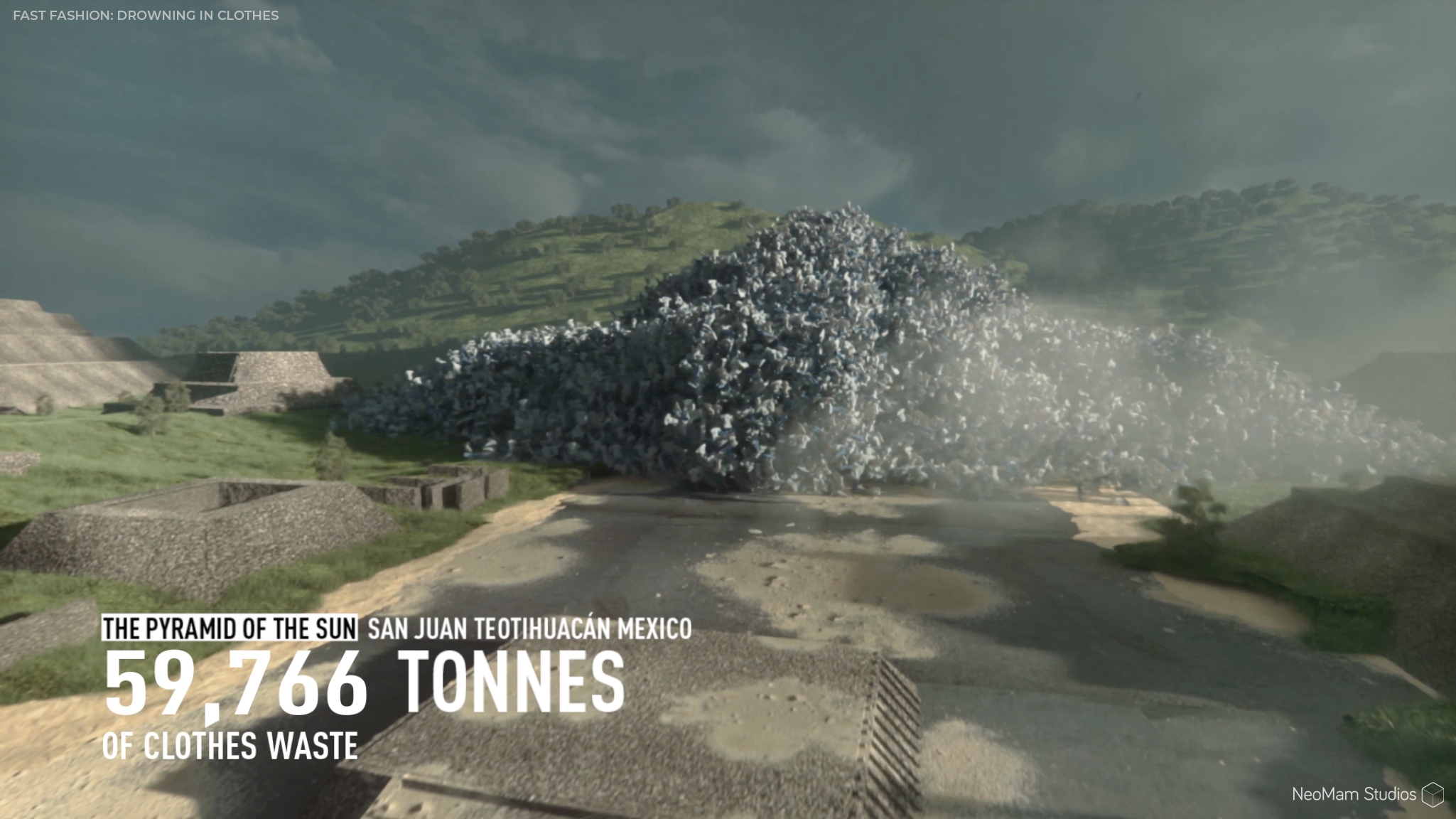
Pyramid of the Sun in Teotihuacan, Mexico = 3 hours and 50 minutes
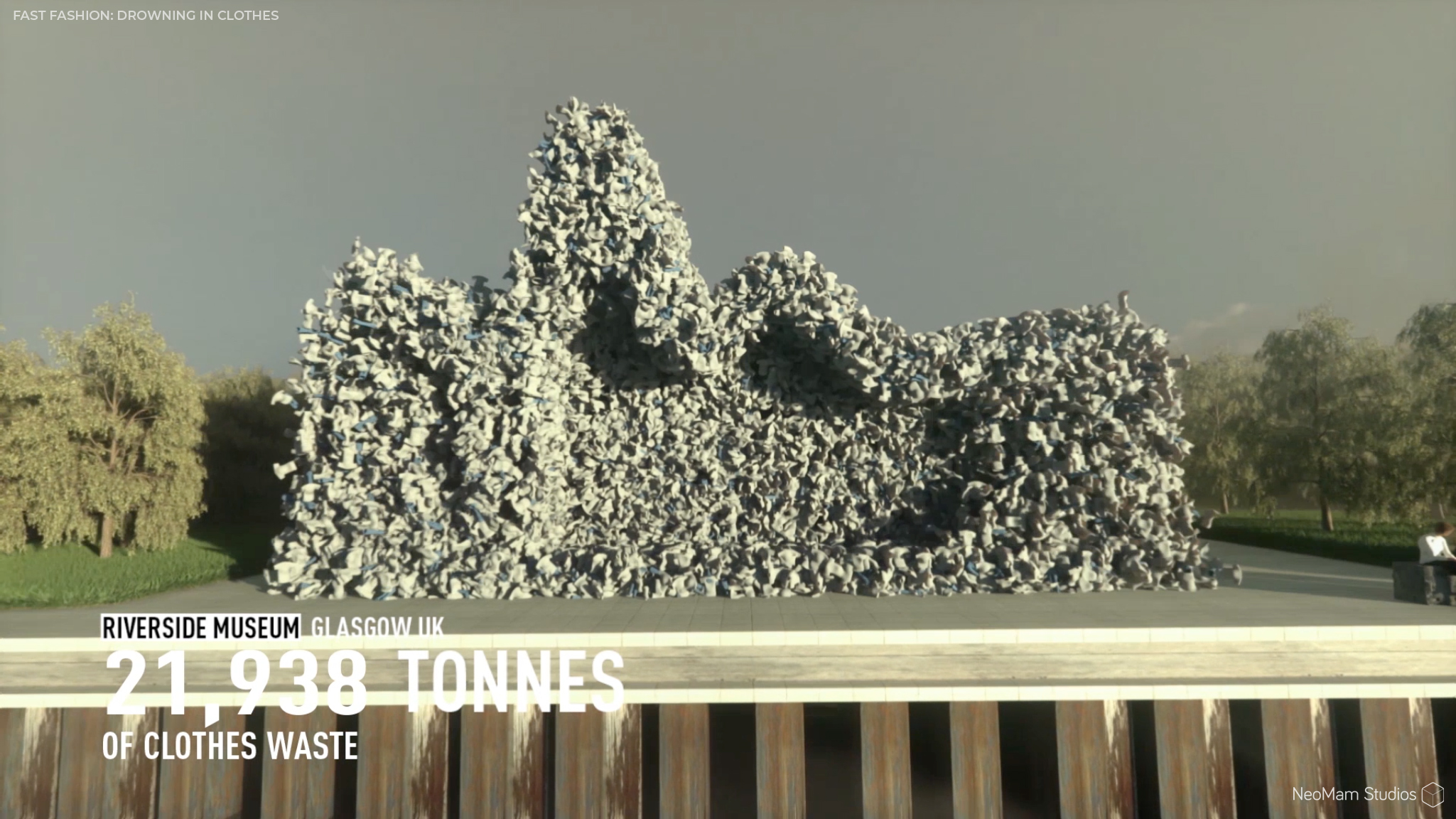
Riverside Museum in Glasgow, United Kingdom = 77 minutes
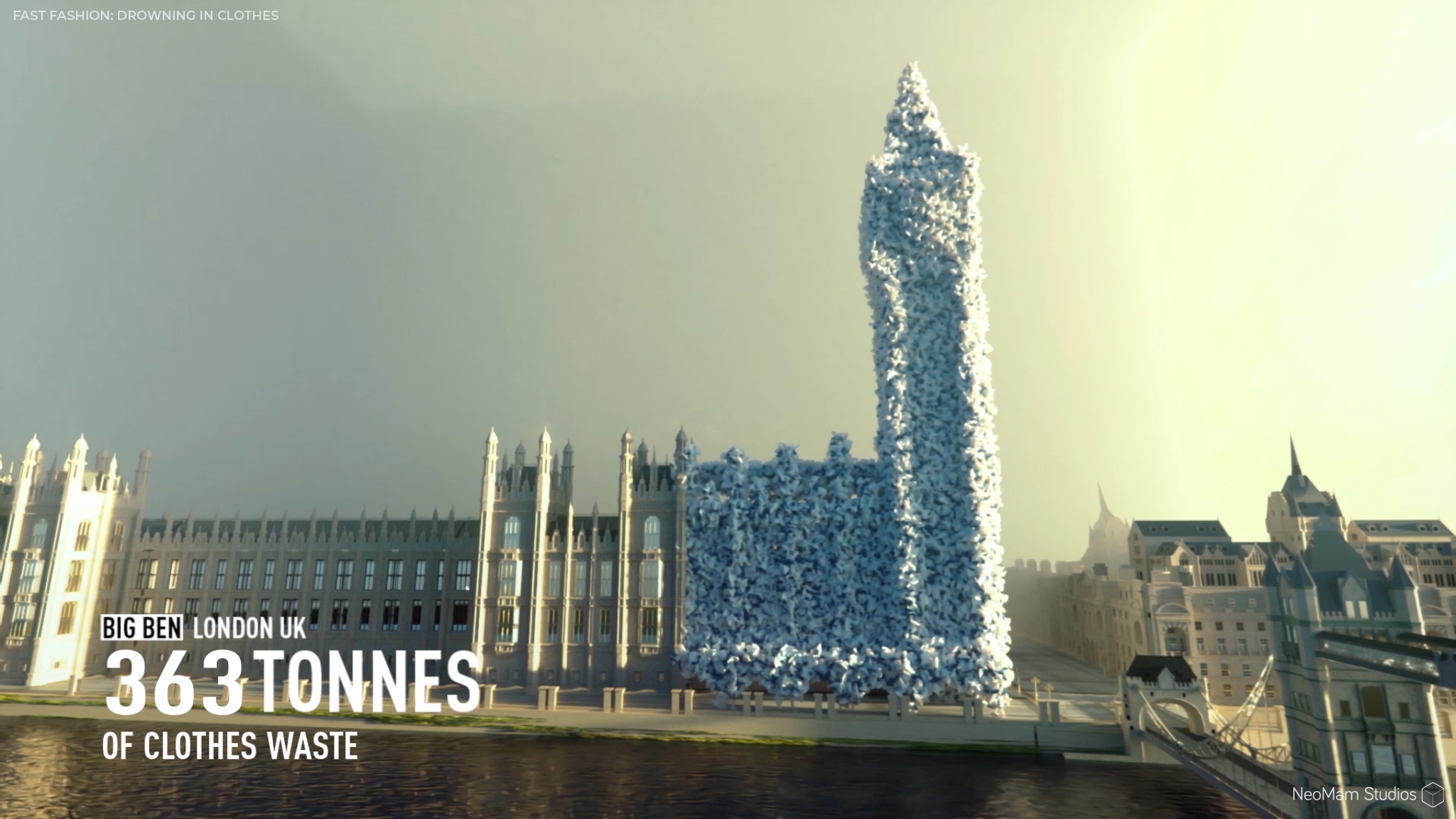
Big Ben/Elizabeth Tower in London, United Kingdom = 76 seconds
8 Small Changes We Can Make Today
As impressive and imposing as each of these landmarks may be, the sheer volume of clothing that we currently burn or throw away dwarfs them by comparison. But it doesn’t have to be this way, there is growing pressure on some of the most popular high street shops to seriously evaluate their sustainability and make changes.
We can’t just rely on the big retailers to solve the problem, we also have our part to play. By making some simple changes in our own lives, we can help prevent this grim future:
- Donate to charity. Instead of throwing old clothes away, donate them to a charity shop. Clothes Aid will even pick them up from your home and deliver them to a charity shop for you.
- Shop second hand. Instead of buying new clothes, shop second hand. Check out your local charity shop, if you don‘t have one close by, Oxfam has a great range and you can shop online.
- Buy high quality clothing. Check the quality of the clothes you buy; if possible, it can be more economical to spend more on something that will last a long time.
- Choose environmentally friendly fabrics. Whenever possible, opt for bamboo or other natural fabrics. Polyester is a petroleum-based fiber made from a carbon-intensive non-renewable resource and it doesn’t biodegrade as easily as organic fibers.
- Look for opportunities to upcycle. Could that old shirt make a cute pillow cover? Or maybe you could even transform that pile of old clothes into trendy new outfits.
- Recycle whenever you can. Any item of old clothing can be repurposed as a cleaning rag, and you’ll earn sustainability bonus points for reducing your dependence on paper towels.
- Identify items with potential for reselling. Reduce waste and make a little extra cash by reselling old clothes. Try selling them online on sites like eBay or Vinted.
- Rehouse clothes with a little help from your friends. Invite some friends over for a clothes swap, so you can all save some money and get a brand new (to you) wardrobe.
Summary
The aforementioned eight small changes which can be implemented today will allow all of us to play our part in reducing the ocean of wasted clothes that are created every year. Actions like these are vital — because unless we become more deliberate with our choices, we may someday find ourselves literally drowning in clothes.
Talk about being full of shirt one day. It is enough to cause one to pant; so let us not skirt this issue before it socks it to the environment, coats the surface of the planet with used clothes, and belts us with unwanted pollution.
Other articles written for Earth Day in 2020 include:
- Earth Day 2020: Clean the World by Recycling Used Soap and Plastic Bottles
- Earth Day 2020: More Littering of Contaminated Gloves and Masks From the 2019 Novel Coronavirus
- Earth Day 2020: Should Single Use Plastics Be Eliminated at Hotels Worldwide After All? 2019 Novel Coronavirus Pandemic
- Earth Day 2020: 6 Ways to Conserve Water — Especially During a Pandemic
Photograph ©2020 by Brian Cohen.

